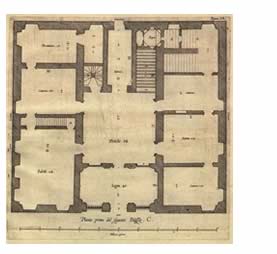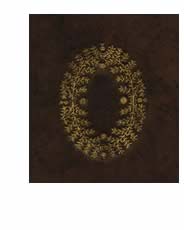Peter Paul Rubens (1577 - 1640) was born in Westphalia to Protestant
parents who saw that his education was a full and rounded one - with training
in Latin and classical mythology. He served his apprenticeship as a painter
and enetered the Guild in 1598. Two years later he went to Venice worked
for the Duke of Mantua. Returning to Antwerp in 1608 he became court painter
to the Regents of the Netherlands and established a European reputation
as a history painter, particularly on a large scale.
Rubens' work with the Book - designs for titlepages and
other illustrations is comparatively neglected but has been the subject
of a lecture by the great Rubens scholar Julius Held in 1977 (see Rubens
and his Circle, Princeton Univ. Press in 1982). Rubens was widely
read, had a substantial library, and quoted freely from classical and
other texts. He planned two books never to be realised - a detailed study
of the Human Figure and a reference work on ancient cameos.
The Palaces of Genoa he published himself in 1622 in Antwerp from drawings
he had commissioned in Italy from other hands. He contributed an introduction
commending the study of the classical facades and plans as worthy of the
abode of the burghers.
.................................
Peter Paul Rubens Palazzi di Genova page size 34 x 44
cms
For a short time I had the opportunity to scrutunise and scan one of the
volumes in this remarkable architectural publication. The material is
offered solely as an exercise in a particular way of drawing rather than
a prelude to an act of Rubens scholarship.
This display is to give you opportunity to look closely at the skill,
craft and method of an early seventeenth century book giving a lot of
visual detail.
01 Dedication
02
lettering for half title
03
characteristic floor plan
04
embossed motif on leather board
05 characteristic facade I
06
characteristic facade II
07 embossed motif front cover
|























